A spacecraft consumes more fuel in going from earth to moon than it takes for a return trip. Comment on this statement.
To analyze the statement that a spacecraft consumes more fuel in going from Earth to the Moon than it takes for a return trip, we can break down the reasoning into a few key points:
1. Understanding Gravitational Forces:
- The gravitational force exerted by the Earth is significantly stronger than that exerted by the Moon. This means that when a spacecraft is launched from Earth, it has to overcome Earth's gravity, which requires a substantial amount of energy and fuel.
2. Fuel Consumption on the Outbound Trip:
- During the journey from Earth to the Moon, the spacecraft must accelerate to escape Earth's gravitational pull. This involves a lot of fuel consumption as it needs to reach a certain velocity to break free from Earth's gravity and travel through space.
3. Gravitational Influence of the Moon:
- Once the spacecraft reaches the Moon, it is in a region of much weaker gravitational influence. The Moon's gravity is about 1/6th that of Earth's. Therefore, when the spacecraft is ready to return to Earth, it does not need to exert as much energy to escape the Moon's gravitational pull.
4. Fuel Consumption on the Return Trip:
- The return trip requires less fuel because the spacecraft is moving from a region of weaker gravity (the Moon) back to a region of stronger gravity (Earth). The spacecraft can use the Moon's gravitational pull to assist in its return journey, which further reduces the amount of fuel needed.
5. Conclusion:
- Therefore, the statement is correct: a spacecraft consumes more fuel going from Earth to the Moon than it does on the return trip due to the differences in gravitational forces and the energy required to escape these gravitational fields.
- The gravitational force exerted by the Earth is significantly stronger than that exerted by the Moon. This means that when a spacecraft is launched from Earth, it has to overcome Earth's gravity, which requires a substantial amount of energy and fuel.
- During the journey from Earth to the Moon, the spacecraft must accelerate to escape Earth's gravitational pull. This involves a lot of fuel consumption as it needs to reach a certain velocity to break free from Earth's gravity and travel through space.
- Once the spacecraft reaches the Moon, it is in a region of much weaker gravitational influence. The Moon's gravity is about 1/6th that of Earth's. Therefore, when the spacecraft is ready to return to Earth, it does not need to exert as much energy to escape the Moon's gravitational pull.
- The return trip requires less fuel because the spacecraft is moving from a region of weaker gravity (the Moon) back to a region of stronger gravity (Earth). The spacecraft can use the Moon's gravitational pull to assist in its return journey, which further reduces the amount of fuel needed.
- Therefore, the statement is correct: a spacecraft consumes more fuel going from Earth to the Moon than it does on the return trip due to the differences in gravitational forces and the energy required to escape these gravitational fields.
Topper's Solved these Questions
Similar Questions
Statement I: It takes more fuel for a spacecraft to travel from the earth to the Moon than for the return trip.
Statement II: The point of zero gravitational field intensity due to the earth and the Moon is lying nearer to the Moon, i.e., in the diagram shown, for r<r0,Eg is towards the earth's centre and for r>r0,Eg is towards the Moon's centre and at r=r0,Eg is zero.
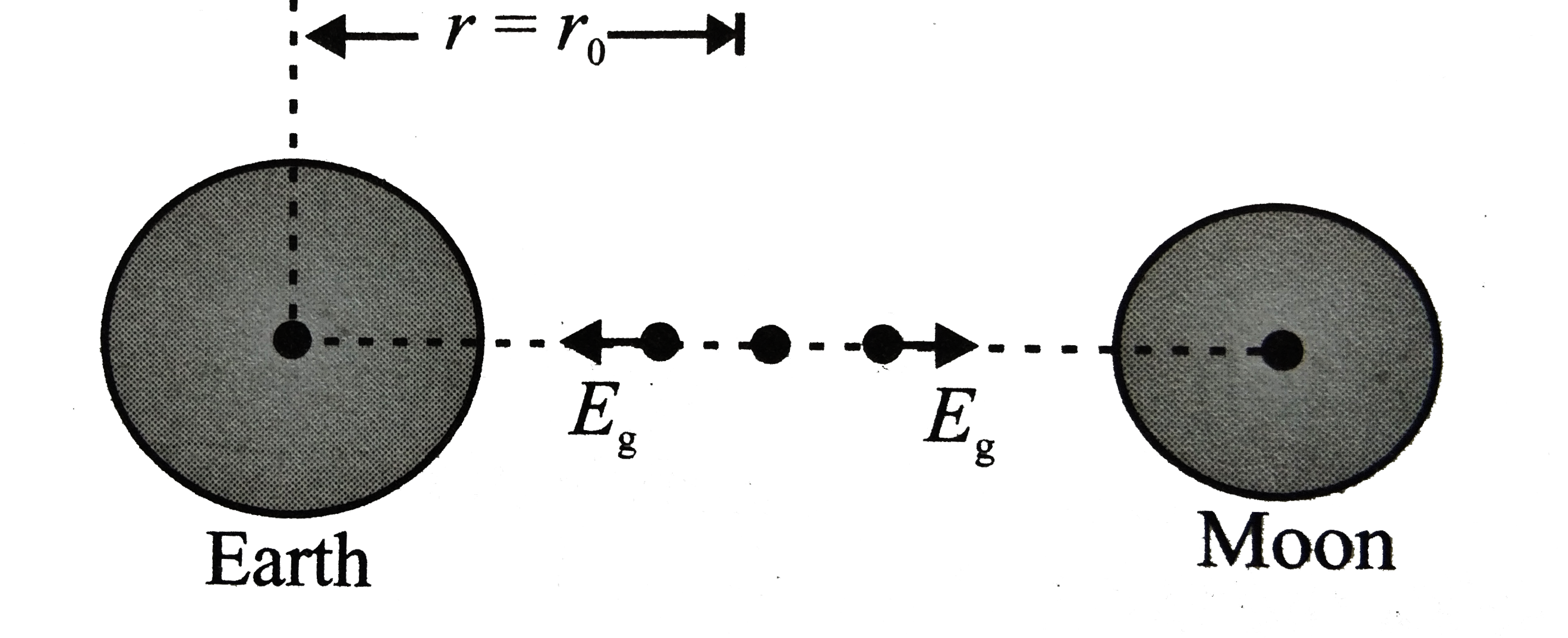 View Solution
View SolutionDuring the journey of space ship from earth to moon and back, the maximum fuel is consumed :-
View SolutionAn unmanned satellite A and a spacecraft B are orbiting around the earth in the same circular orbit as shown.
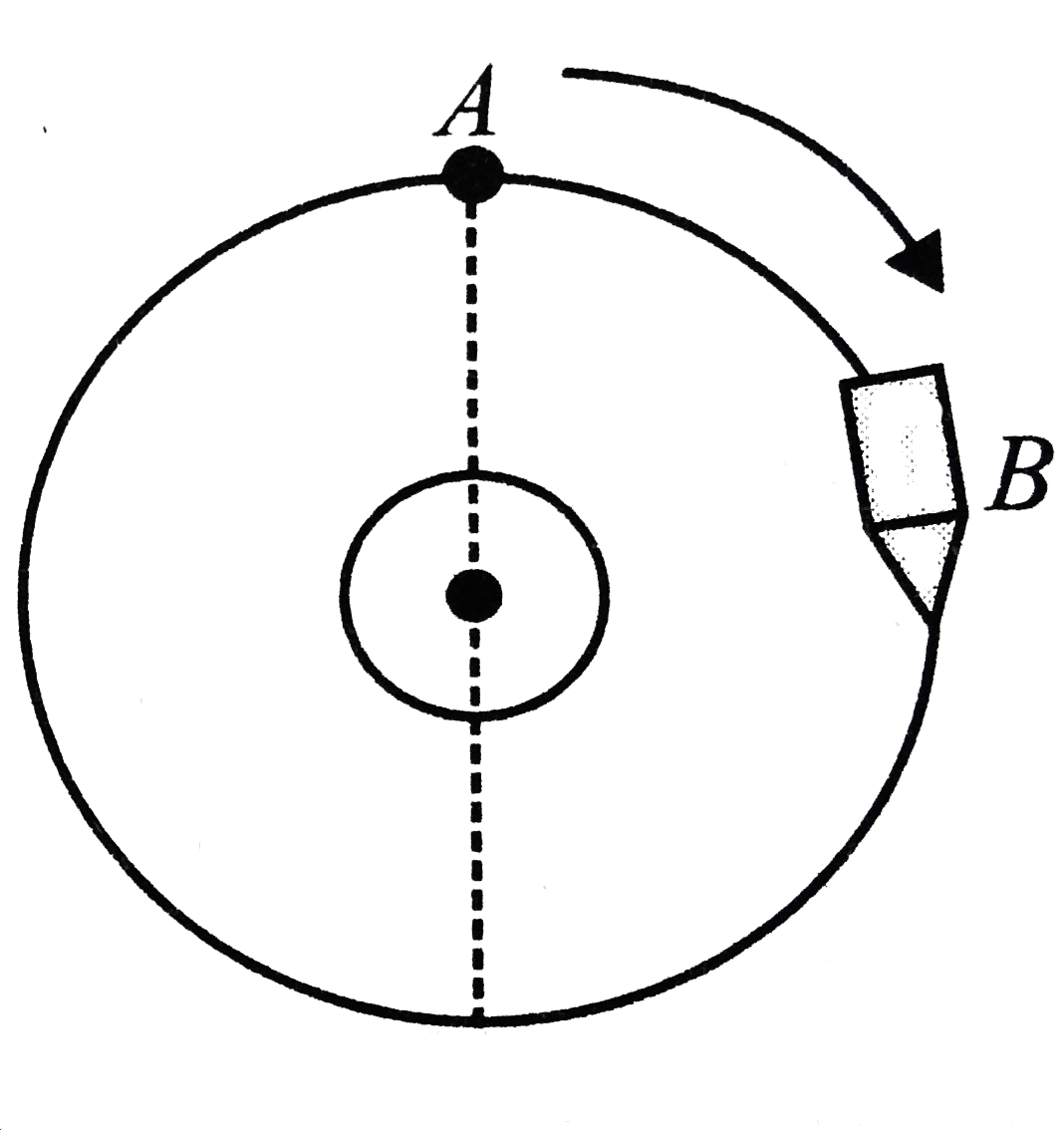 The spacecraft is ahead of the satellite by some time. Let us consider that some technical problem has arisen in the satellite and the astronaut from B has made it correct. For this to be done docking of two (A and B) is required (in layman terms connecting A and B). To achieve this, the rockets of A have been fired in forward direction and docking takes place as shown in the figure below:
The spacecraft is ahead of the satellite by some time. Let us consider that some technical problem has arisen in the satellite and the astronaut from B has made it correct. For this to be done docking of two (A and B) is required (in layman terms connecting A and B). To achieve this, the rockets of A have been fired in forward direction and docking takes place as shown in the figure below:
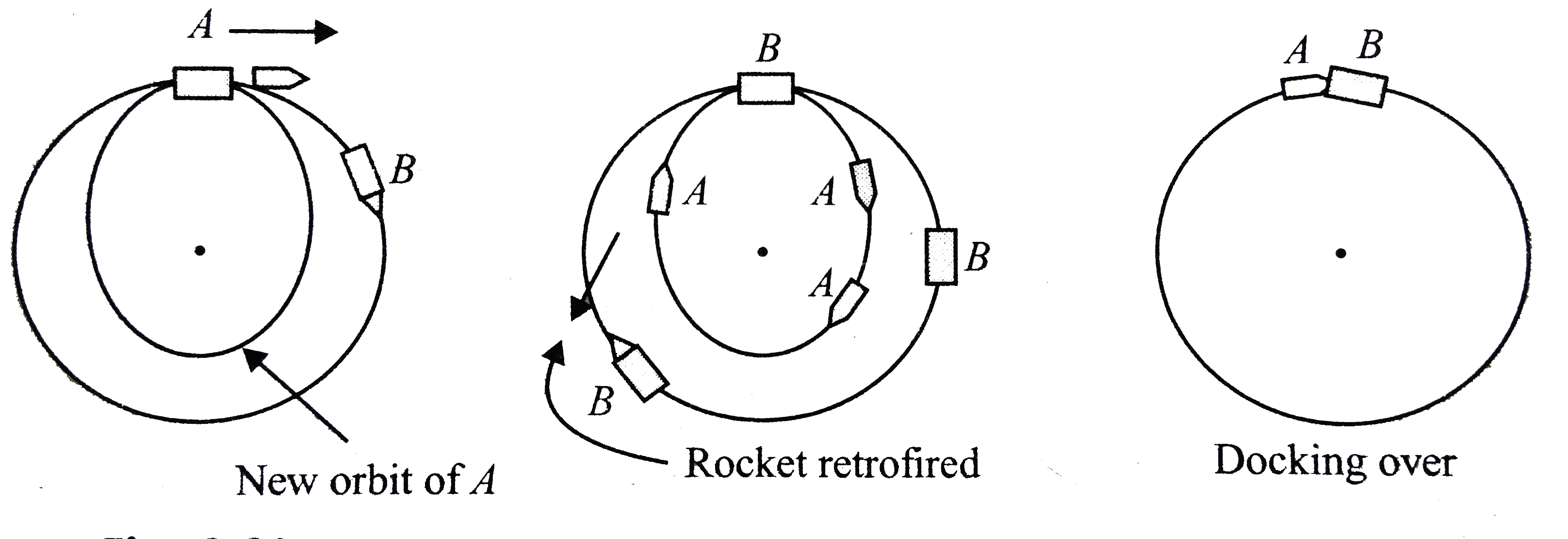
Take mass of the earth =5.98×1024kg
Radius of the earth =6400km
Orbital radius =9600km
Mass of satellite A=320kg
Mass of spacecraft =3200kg
Assume that initially spacecraft B leads satellite A by 100s, i.e., A arrives at any particle position after 100s of B’s arrival. Based on the above information answer the following questions
The initial total energy and time period of satellite are, respectively,View SolutionAn unmanned satellite A and a spacecraft B are orbiting around the earth in the same circular orbit as shown.
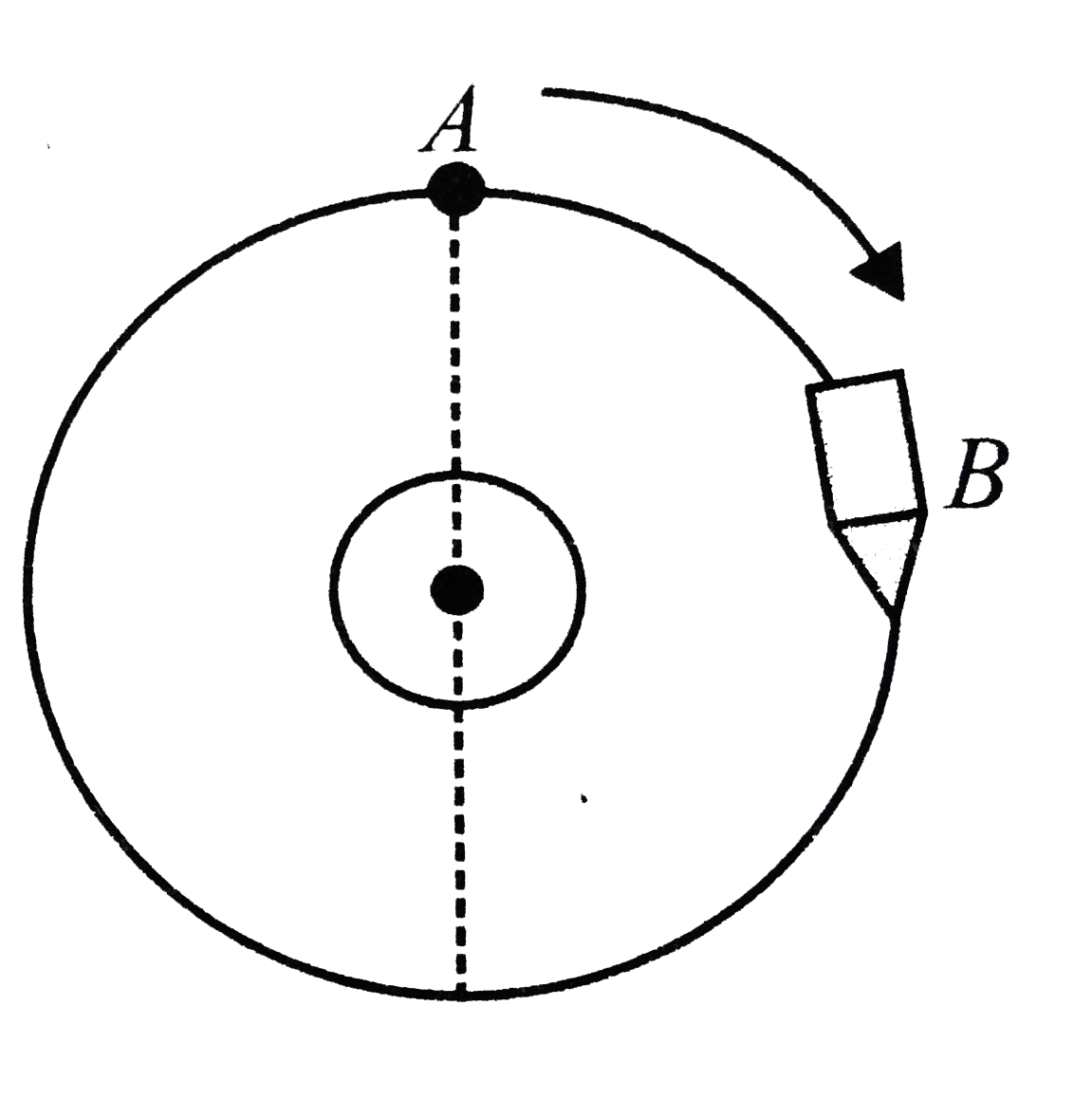 The spacecraft is ahead of the satellite by some time. Let us consider that some technical problem has arisen in the satellite and the astronaut from B has made it correct. For this to be done docking of two (A and B) is required (in layman terms connecting A and B). To achieve this, the rockets of A have been fired in forward direction and docking takes place as shown in the figure below:
The spacecraft is ahead of the satellite by some time. Let us consider that some technical problem has arisen in the satellite and the astronaut from B has made it correct. For this to be done docking of two (A and B) is required (in layman terms connecting A and B). To achieve this, the rockets of A have been fired in forward direction and docking takes place as shown in the figure below:
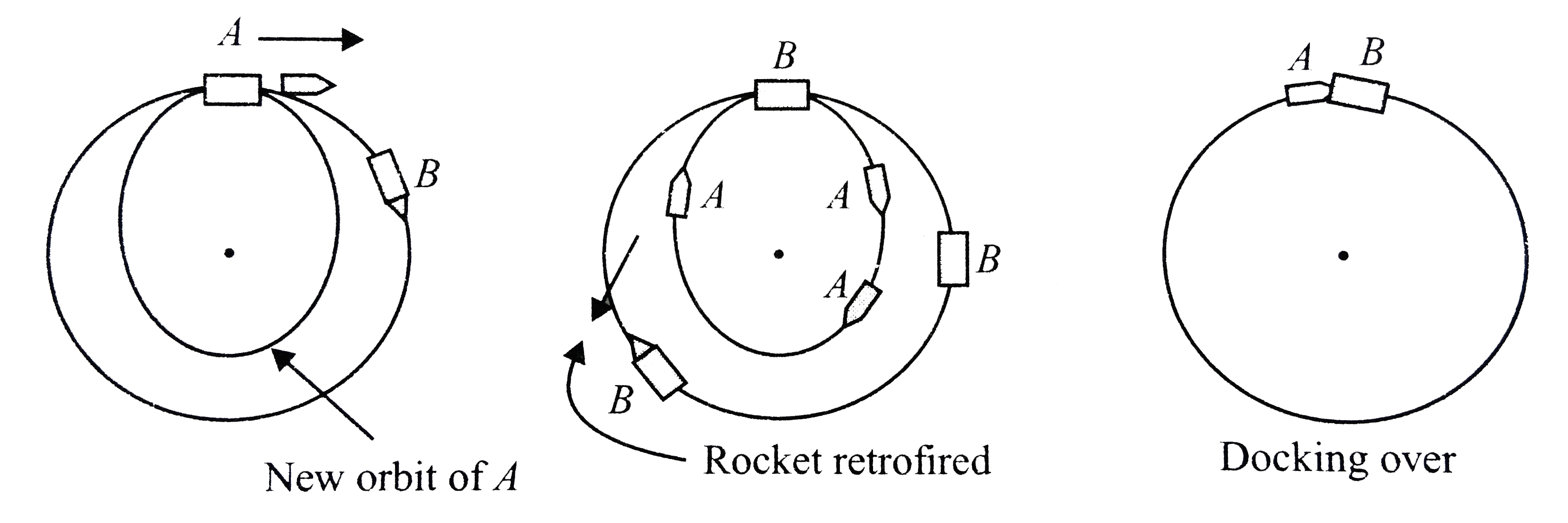
Take mass of the earth =5.98×1024kg
Radius of the earth =6400km
Orbital radius =9600km
Mass of satellite A=320kg
Mass of spacecraft =3200kg
Assume that initially spacecraft B leads satellite A by 100s, i.e., A arrives at any particle position after 100s of B’s arrival. Based on the above information answer the following questions. After once returning to the original point, i.e., the place from where the rockets have been fired, in which direction and with what extent the rockets have to be fired from the satellite to again come back in the original orbit?View SolutionAn unmanned satellite A and a spacecraft B are orbiting around the earth in the same circular orbit as shown.
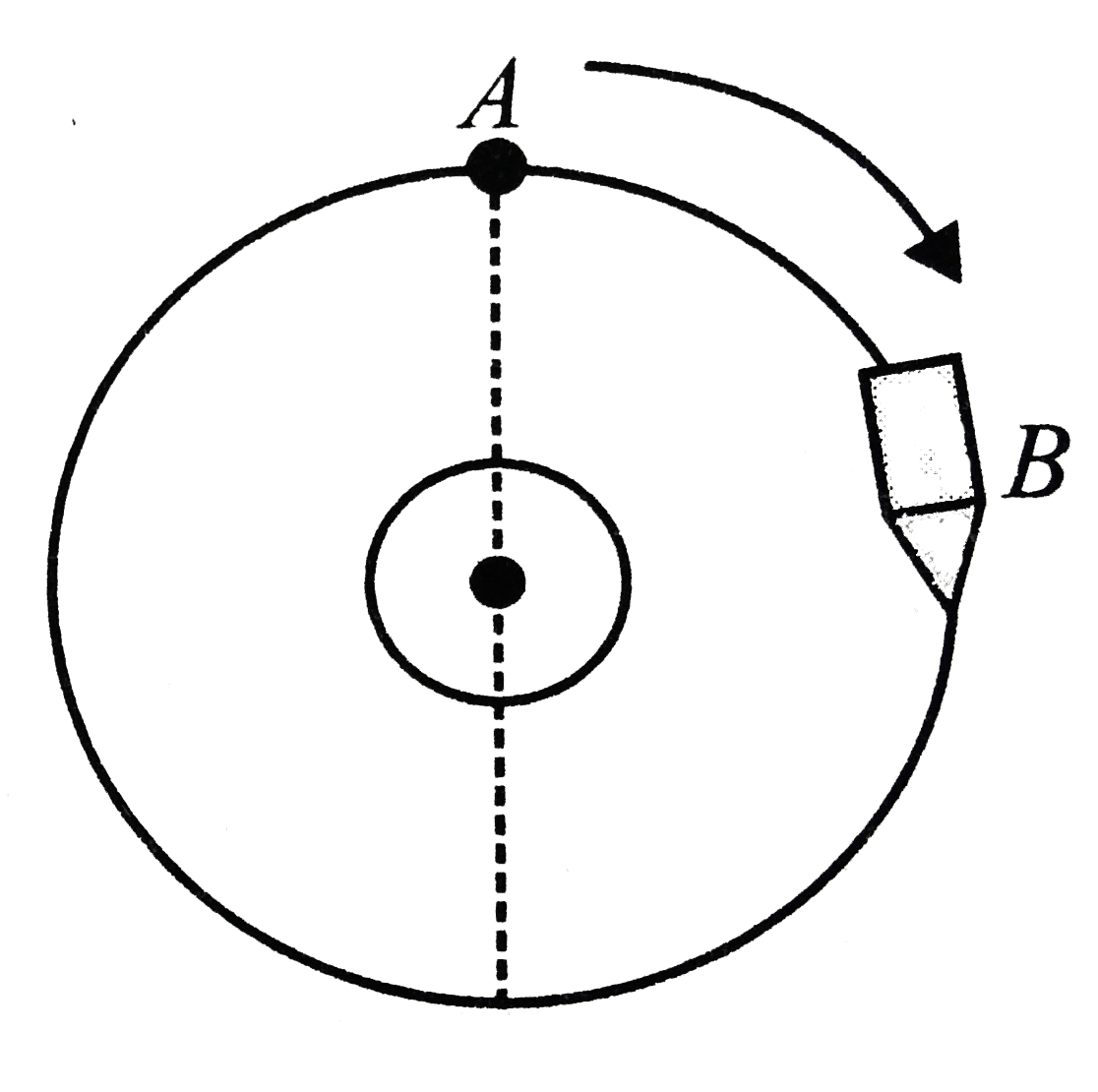 The spacecraft is ahead of the satellite by some time. Let us consider that some technical problem has arisen in the satellite and the astronaut from B has made it correct. For this to be done docking of two (A and B) is required (in layman terms connecting A and B). To achieve this, the rockets of A have been fired in forward direction and docking takes place as shown in the figure below:
The spacecraft is ahead of the satellite by some time. Let us consider that some technical problem has arisen in the satellite and the astronaut from B has made it correct. For this to be done docking of two (A and B) is required (in layman terms connecting A and B). To achieve this, the rockets of A have been fired in forward direction and docking takes place as shown in the figure below:
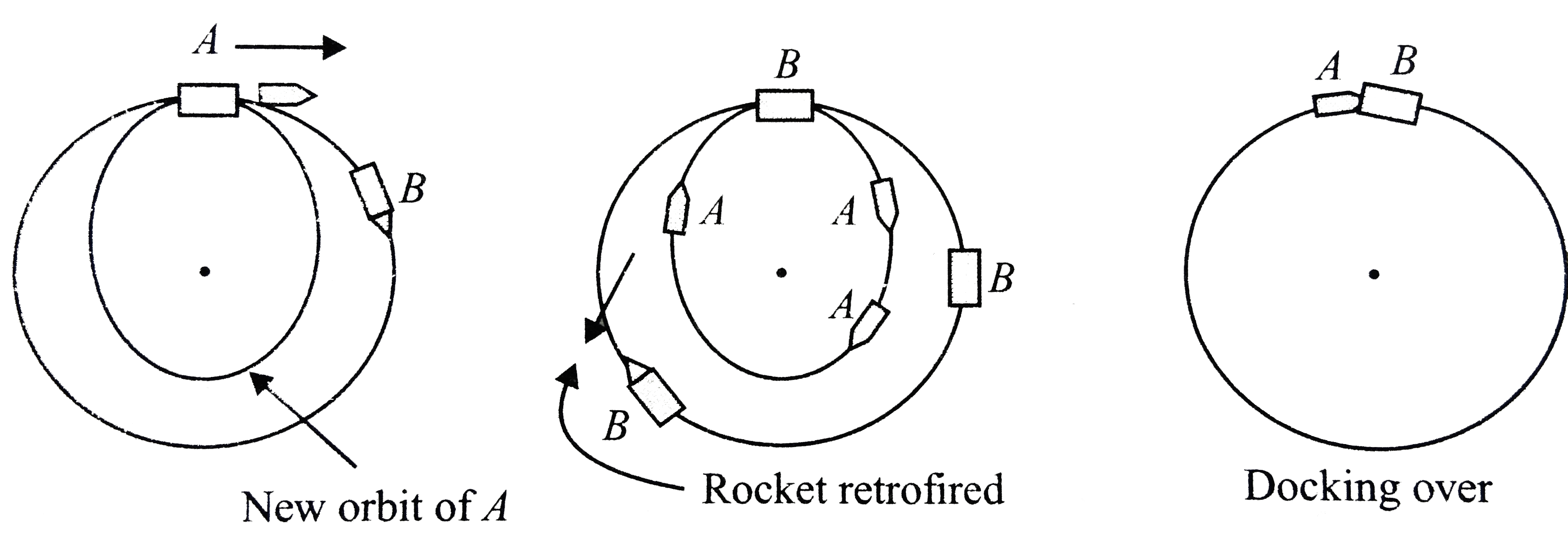
Take mass of the earth =5.98×1024kg
Radius of the earth =6400km
Orbital radius =9600km
Mass of satellite A=320kg
Mass of spacecraft =3200kg
Assume that initially spacecraft B leads satellite A by 100s, i.e., A arrives at any particle position after 100s of B’s arrival. Based on the above information answer the following questions.
To dock A and B in the above-described situation, one can use the rocket system of either one, i.e., either of A or of B. To accomplish docking in the minimum possible time which is the best way?View SolutionStatement I- The area of the curve y=sin2xfrom0toπ will be more than that of the curve y=sinxfrom0toπ.
Statement II -x2>x,ifx>1.View SolutionA motor boat whose speed is 18 km/h in still water takes 1 hour more to go 24 km upstream than to return downstream to the same spot. Find the speed of the stream.
View SolutionA motor boat whose speed is 18 km/h m still water takes 1 hour more to go 24 km upstream than to return downstream to the same spot. Find the speed of the stream.
View SolutionA motor boat whose speed is 18 km/h m still water takes 1 hour more to go 24 km upstream than to return downstream to the same spot. Find the speed of the stream.
View SolutionA motor boat whose speed is 18 km/h m still water takes 1 hour more to go 24 km upstream than to return downstream to the same spot. Find the speed of the stream.
View Solution

